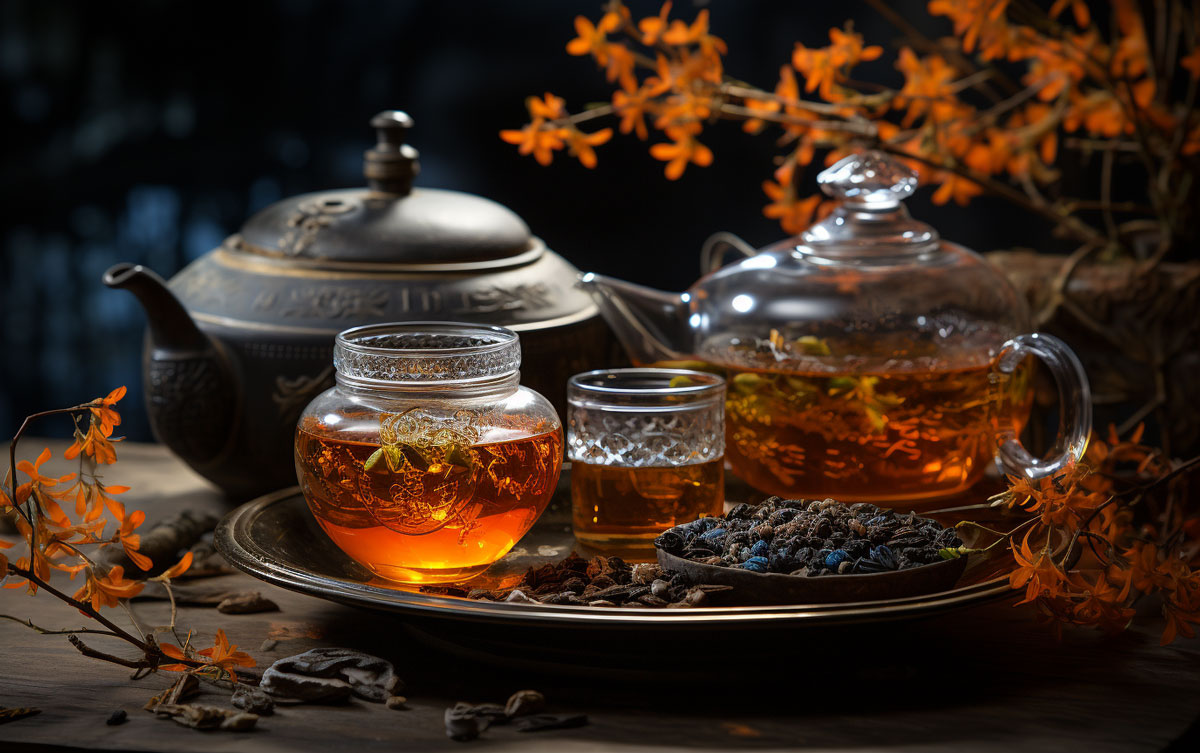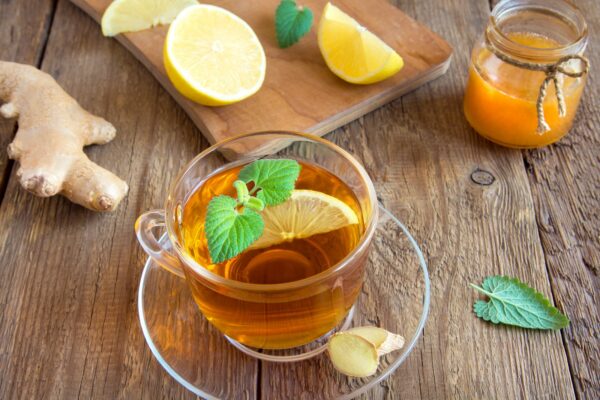Qi » Wellness Blog » Tea Blog » A Guide to Theophylline in Tea

A Guide to Theophylline in Tea
If you’ve ever felt more focused and stimulated after drinking tea, you’ve experienced the effects of caffeine, a common and widely tolerated stimulant found naturally in the tea plant (Camellia sinensis). But some people are sensitive to caffeine and drink tea without issue, while others report feeling less jittery with tea than they do with coffee or energy drinks, so what’s happening?
What is Theophylline?
Theophylline is a methylxanthine formed primarily following the metabolization of caffeine. First discovered by Albert Kossel in the late 19th century, theophylline was initially used as a diuretic. A century later, it was found to have a bronchospasmolytic effect—it relaxes the bronchial muscles and relieves pressure and obstructions. For this reason, synthesized theophylline is often used to treat asthma, and this has been true for a number of years.
It may have an anti-inflammatory effect too, potentially negating some of the inflammatory effects of asthma, and it could provide other benefits. There are many known side effects and risk factors associated with the use of theophylline, but these apply to the medication, which is consumed in far greater doses than found in tea.
How is Theophylline Produced?
Black tea contains an estimated 0.2 to 0.4% theophylline by dry weight. Pharmaceutical companies must therefore import vast quantities of tea to synthesize theophylline medication.
Most of the theophylline you consume is created via a metabolic process. Caffeine follows certain metabolic pathways that remove methyl groups, creating either theophylline or the aforementioned theobromine.
Some tea producers will actively avoid creating a product with high levels of caffeine and theophylline, either to offer a specific balance of flavors or to create a less stimulating tea. Studies also suggest that introducing certain types of bacteria during the fermentation of dark tea could increase/reduce the levels of theophylline.
How Much Theophylline is in Tea?
Tea contains very little theophylline, with an average concentration of about 1mg per ounce of prepared tea. Estimates suggest that the average American consumes just 0.14mg of this compound every day from tea. To put that into perspective, the recommended dose for theophylline medication begins at 300mg per day.
To consume that 300mg by drinking black tea, you’d need about 300 cups, and would suffer issues with extreme caffeine overdose/water intoxication long before hitting that 300mg.
Theophylline levels also vary by type of tea. Quantities increase via fermentation and withering, so black tea has more than green, white, yellow, and oolong tea.
Which Tea Contains the Most Theophylline?
There is more theophylline in black tea than in green tea and other types of tea, but this alkaloid isn’t exclusive to Camellia sinensis. In fact, it’s found in small quantities in everything from cacao to coffee. It’s in yerba mate too, a high-caffeine drink consumed throughout South America. A 2022 study on theophylline concentrations found that hibiscus tea had the highest levels of all the 11 teas studied, including green tea.
What Does the Name Theophylline Mean?
As with many medicines and compounds, theophylline comes to us from Greek. The word “thea” or θεια is the feminine form of “god” and was the genus name given to the tea plant. “Phylline” comes from φύλλων, which simply means “leaf”.
Summary: Theophylline in Tea
Theophylline is a useful but controversial substance. It clearly has many benefits, but its prolonged and chronic use has been called into question, so it’s not as commonly used as it once was. In tea, none of that really matters, as the concentration is so low that it’s unlikely to produce any of the same side effects. Of course, it also means that it likely won’t produce many—if any—benefits either.
It’s true that many people report feeling different effects from drinking tea than they do from coffee and caffeinated soft drinks. It could be the dose, as tea contains less caffeine than your average cup of coffee or can of energy drink. It could be that additional alkaloids (including theophylline, but more likely theobromine) are influencing the caffeine and balancing the effects.
It could also be a mixture of the two. Either way, the presence of theophylline in tea is so minute that it shouldn’t really be seen as a reason to drink or not drink this beverage.






